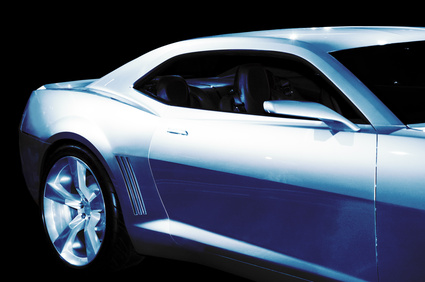
The Chevrolet Camaro has been a player in the category of modestly priced performance vehicles for over four decades. Performance not only means acceleration and handling, but also stopping power. The braking system on the Camaro has evolved over the years to now be comprised of four-wheel anti-lock disc brakes. The brake pads should be inspected regularly to reveal wear or other damage as soon as possible. Changing the brake pads ensures consistent braking performance and save on wear and tear of the brake rotors.
Park the Camaro on level ground and open the hood. Move to the engine compartment.
Remove the master cylinder cap and siphon half of the brake fluid from the reservoir with a turkey baster or syringe. Dispose of the removed fluid. Lay the master cylinder cap loosely on top of the reservoir.
Loosen, but do not remove, the lug nuts on the wheels corresponding to the brake pads you will be replacing. Use the tire iron or a 21-mm socket and breaker bar to crack the lugs.
Place the floor jack beneath the frame of the Chevy and lift the vehicle until the tires are at least 2 inches above the ground. Place jack stands beneath the axles to support the vehicle.
Remove the lug nuts and take the wheels off.
Remove the caliper pins on the back side of the caliper with a 13-mm socket wrench.
Lift the caliper away from the caliper bracket, then rest it above the brake assembly or suspend it from the steering arm with a wire hanger or bungee cord.
Slide the worn brake pads from the caliper bracket. Use a flat screwdriver to pry the pads away from the bracket if you are unable to remove them by hand.
Inspect the rotor and the caliper bracket. Look for warping of the rotor; it should be smooth and flat. Make sure there are no cracks or other damage to the caliper bracket. Replace the components if damage is identified.
Apply anti-squeal, copper-based brake grease to the back sides of the new brake pads. Slide the pads into the caliper bracket and against the rotor.
Place the C-clamp or channel lock pliers over the caliper piston and the back side of the caliper. Squeeze the piston into the side of the caliper. The brake fluid in the caliper will be forced through the brake lines and into the master cylinder reservoir.
Remove the C-clamp or pliers once the piston is fully depressed within the caliper. This provides the extra room needed to cover the thicker brake pads.
Replace the caliper over the new brake pads and screw in the caliper pins. Tighten the pins with the 13-mm socket wrench.
Replace the wheels onto the lug bolts and screw on the lug nuts.
Lift the Camaro with the jack and remove the jack stands from beneath the axles. Lower the Chevy's tires to the ground. Use the tire iron to tighten the lug nuts.
Repeat the process for each additional set of brake pads you need to replace. If you only have to replace one set of brake pads, replace the pads on the opposite side as well. Inspect all of the brakes as a part of regular brake maintenance.
Press the brake pedal all the way to the floor three times. Release the pedal and repeat the depressions. Return to the engine compartment.
Remove the master cylinder cap once again and place a funnel into the container. Fill the reservoir with brake fluid. Replace the cap securely onto the master cylinder and close the Camaro's hood.